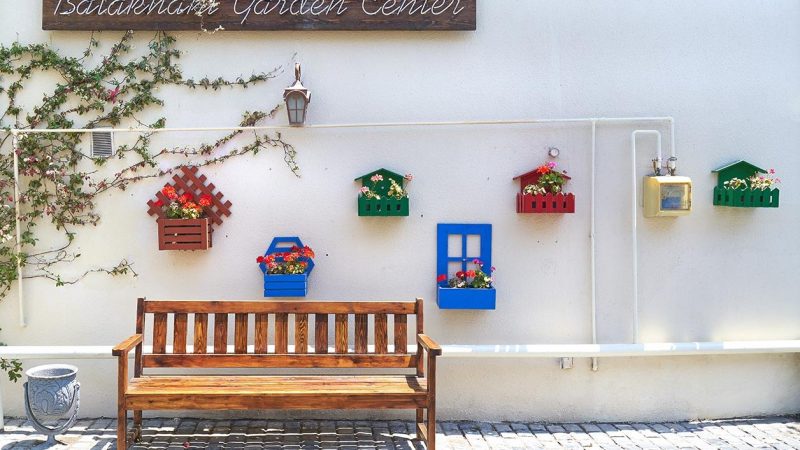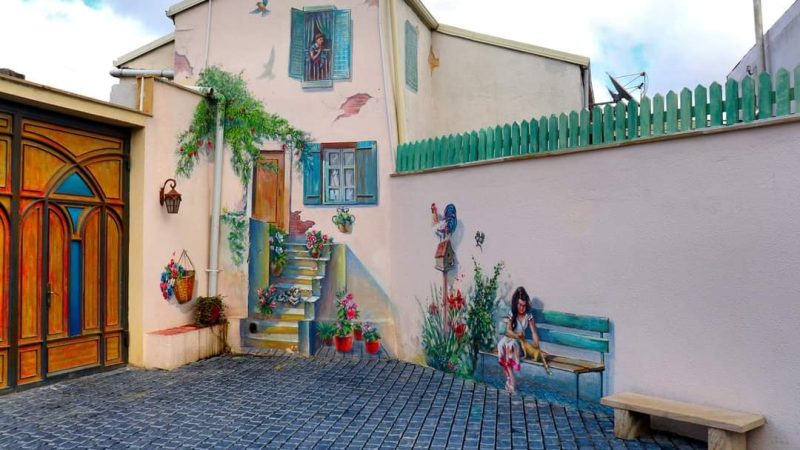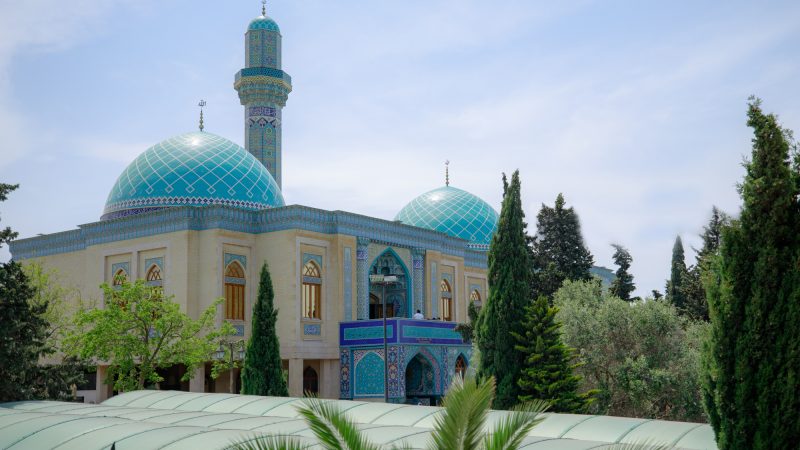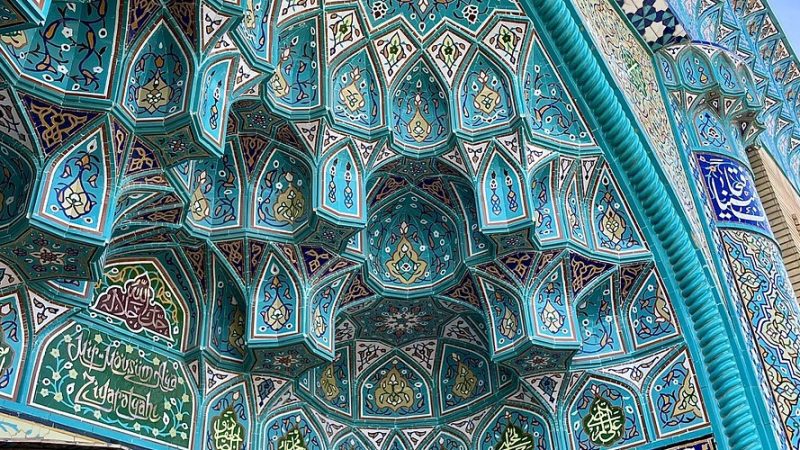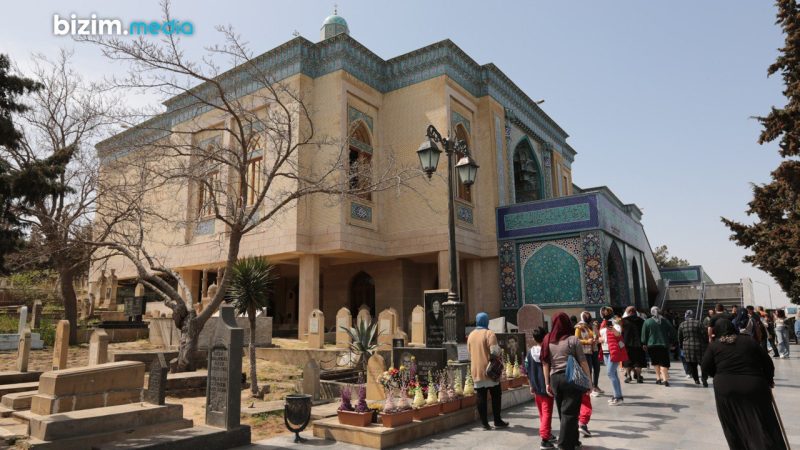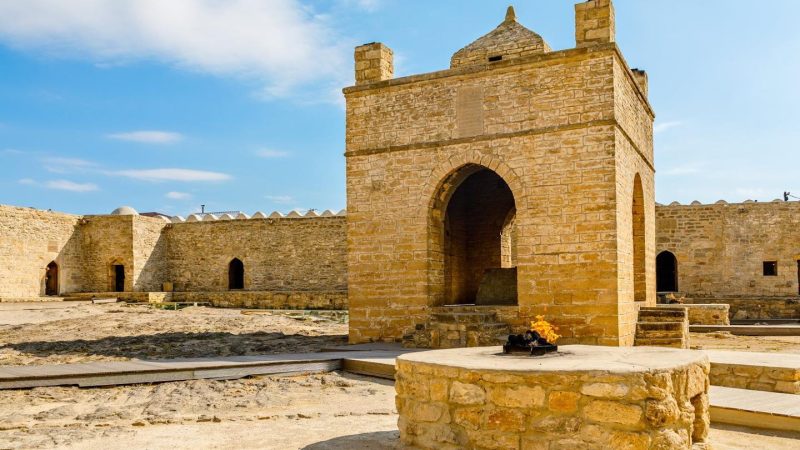Ateshgah Fire Temple
The Ateshgah Fire Temple is one of the most exotic and iconic sights in Azerbaijan. Located 30 km from Baku in the Surakhani district, this ancient sanctuary stands on land famous for its natural gas vents that ignite upon contact with air. The current structure was built in the 17th–18th centuries by Indian merchants from the Sikh community. However, the site’s history stretches back much further — it was originally a Zoroastrian place of worship, where followers of the fire-worshipping religion revered the eternal flames. After Islam became the dominant religion in the region, the original Zoroastrian temple was destroyed, and many Zoroastrians migrated to India.
Mardakan Fortresses and Ancient Mosques
Mardakan Quadrangular Fortress (12th century):
Built in 1187–1188 by Akhsitan I, son of Shirvanshah Manuchehr III, this rectangular castle was erected to commemorate his military victory. The fortress rises 22 meters high and has five internal levels connected by a spiral staircase. It stands near the older, round tower of Mardakan and surpasses it in height by 10 meters.
Tuba Shakhi Mosque (15th century):
Located in Mardakan, this mosque is a fine example of religious architecture from northern Azerbaijan. It was commissioned by a noblewoman, after whom the mosque is named, and remains a symbol of local culture and heritage.
Round Fortress (13th century):
Dated to 1232 and attributed to architect Abdulmajid ibn Masud, this fortress gets its name from the circular shape of its main tower, which rises 12.5 meters. The central courtyard is surrounded by 7-meter walls, providing strong defensive protection.
Mirmovsum Agha Mosque
This mosque is one of the most revered and mysterious sites on the Absheron Peninsula. Built in honor of Mirmovsum Agha — a saint known for his healing abilities and spiritual wisdom — the site attracts pilgrims and curious travelers alike. Despite a serious illness that limited his physical abilities, Mirmovsum Agha became renowned across the country. The mosque, constructed in the 20th century, offers visitors a moment of spiritual reflection, architectural beauty, and a connection to Azerbaijan’s mystical past.
Balakhani
One of Baku’s oldest oil-producing settlements, Balakhani played a key role in the global oil boom. In 1871, the first mechanically drilled oil well in the region produced up to 10 tons of oil daily, attracting major industrialists like the Nobel brothers and the Rothschilds. During your visit, you’ll explore the roots of the oil industry and feel the legacy of a bygone era — captured in the famous film “The Kingdom of Oil and Millions.”
Despite modern facades, Balakhani has preserved its original character — narrow streets, cobblestones, and tightly clustered houses. The village is adorned with colorful shutters, murals, and national motifs. Notable visitors include Sergey Yesenin, Stalin, and Alexander III. The first Azerbaijani silent film was also shot here in 1898.
Highlights of the tour include ancient wells (ovdans), caravanserais, mausoleums, underground reservoirs, ruins of hammams and mosques, and a monument to a classic Azerbaijani comedy. You’ll also see operational oil pumps up close — a rare sight today.
Yanardag – The Burning Mountain
Yanardag is one of the most awe-inspiring natural wonders of the Absheron Peninsula. This hillside has been burning for centuries due to natural gas seeping through the ground and igniting on contact with air. Rain and sand cannot extinguish the flames. This eternal fire is why Azerbaijan is often called the “Land of Fire.” Yanardag remains a powerful symbol and unforgettable experience for all who visit.

 English
English

